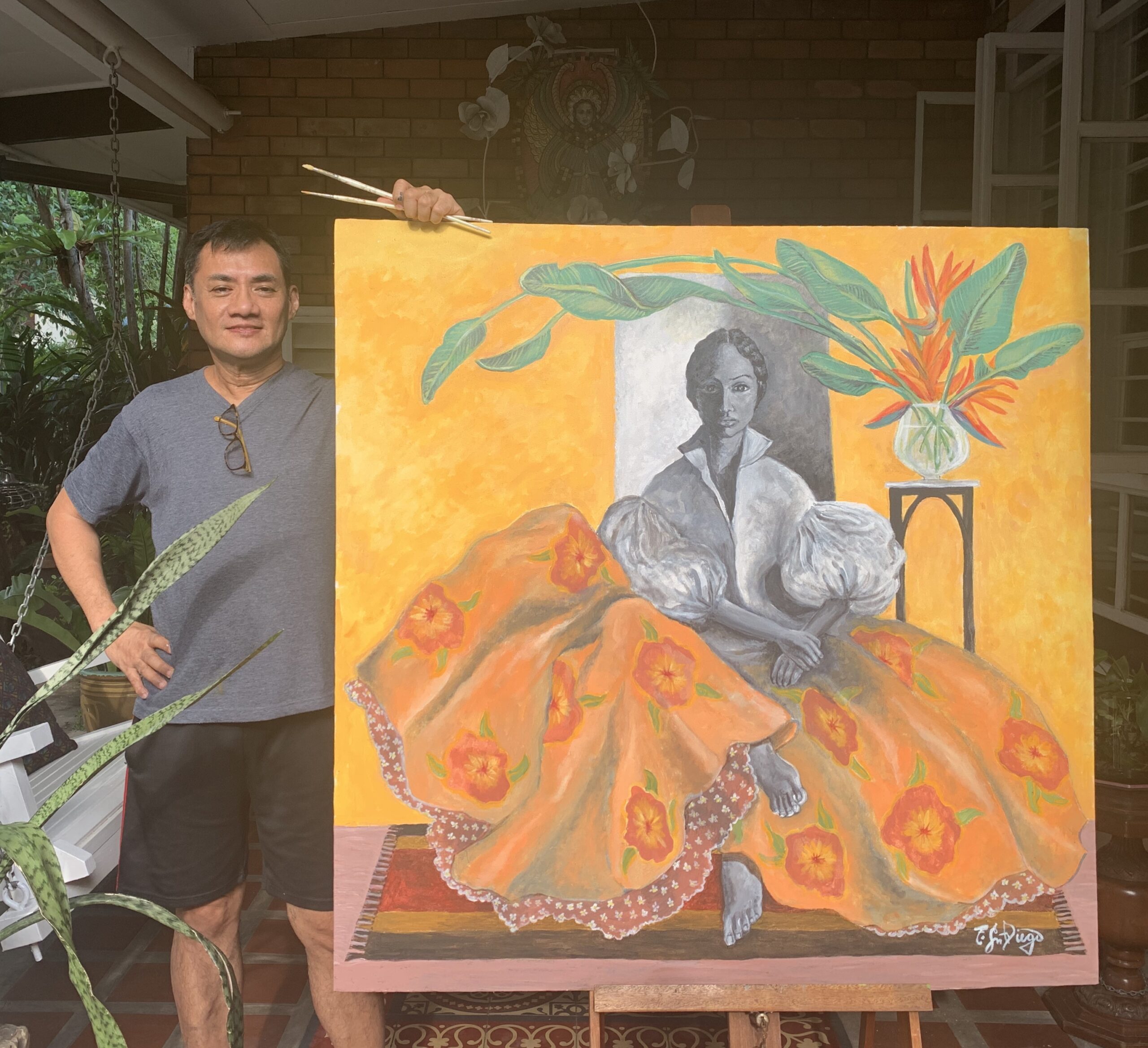Freed from everyday concerns of running a shop and dealing with all sorts of client demands, Edgar San Diego has finally found the time to sit down and paint again. And what lovely works of art they are!
By Alex Y. Vergara
For some people, the coronavirus pandemic marked the end of everything, as the ensuing lockdown and prevailing uncertainty afterwards have forced them to abandon their careers for good and face a bleak future. For others, however, it signaled the end of a career and the start of another.
Although seasoned fashion designer Edgar San Diego has always considered painting his first love, he was forced to relegate it to the sidelines for decades, as he immersed himself designing made-to-measure clothes and costumes for nearly 40 years. All that came to an abrupt halt last March 15, the first day of the government-imposed Luzon-wide Enhanced Community Quarantine and two days since the Fine Arts graduate (major in Advertising) from the University of Santo Tomas turned 60.

“I started to paint again two years ago when my batch mates from UST asked me to join a school reunion that doubled as a group exhibit,” says the four-term president of the Fashion Designers Association of the Philippines. “But after the exhibit, I found myself back in the fashion business until the lockdown was imposed. After decades of devoting my life to fashion, I thought of the development as a sign. I started asking myself if I should retire from fashion already.”
With almost nothing to do and no clients to attend to, Edgar, like most energetic senior citizens, busied himself cleaning the house, emptying and reorganizing cabinets and gardening during the first two months of the lockdown.
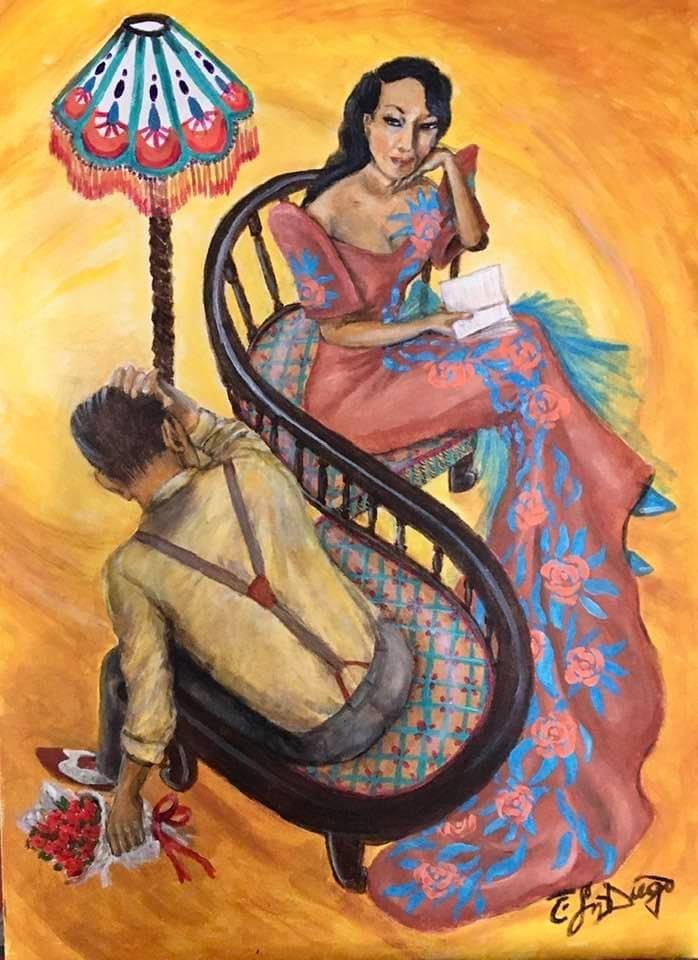
“I basically did the things I had no time to attend to before,” he says. “Finally, when there was nothing else left to fix, I had this urge to text my canvas supplier. Luckily, they have remained open for business.”
Freed from everyday concerns of running a shop and dealing with all sorts of requests and demands from clients, Edgar finally found the time to sit down and paint. His medium of choice? Acrylic, which he has been partial to, he says, ever since. It was early May when he started posting new artworks on Facebook to gauge people’s reactions.
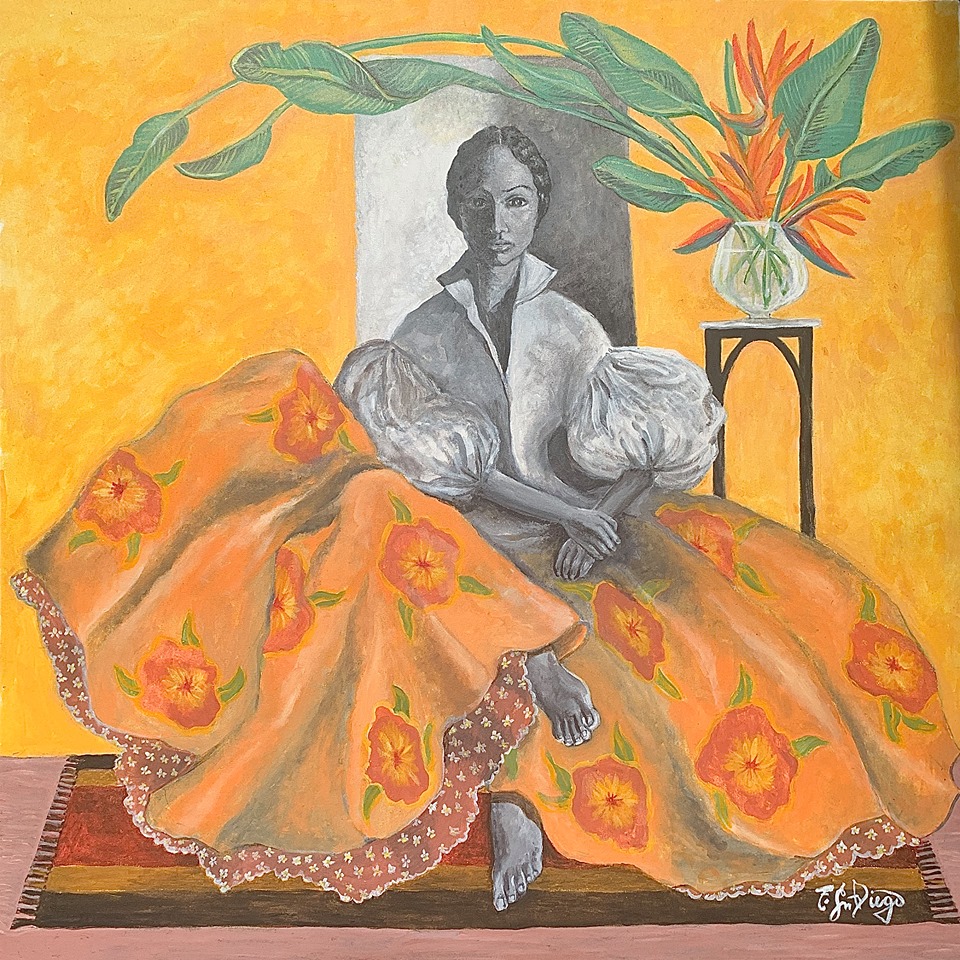
“Up to now, I’m still overwhelmed by all the positive remarks I’ve been getting,” he says.
If there’s one recurring element in Edgar’s artworks, apart from their vibrant colors, it’s the celebration of his subjects’ Filipino-ness, from the woman’s elaborate Filipiniana dresses to iconic furniture pieces and bygone activities that hark back to seemingly kinder, less harried times such as the 1950s, the 1920s, even the turn of the last century.
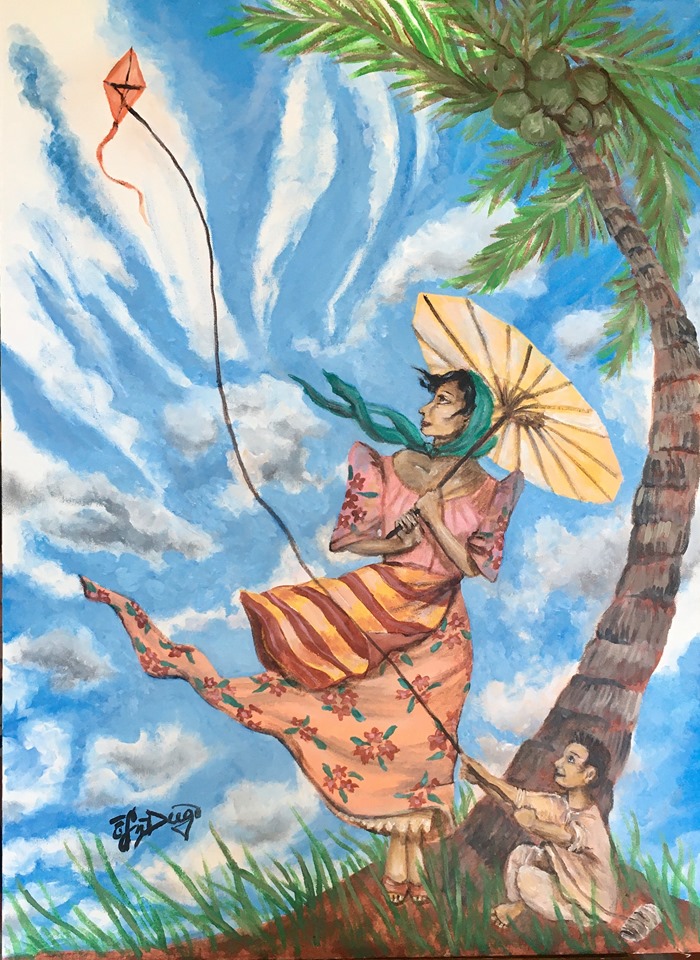
Edgar’s impressionistic sketches also invariably reveal the designer in him, but he doesn’t let his women’s exquisite finery overwhelm the canvas. Although the baro’t saya or the terno and their wearer, usually a dusky Pinay beauty, are usually his paintings’ focal points, he always allows his entire canvas, through the use of various other smaller elements, to tell bits and pieces of stories that are, of course, subject to the viewer’s interpretation.
“Each of my work revolves around a Filipino theme visualized from a different angle or perspective,” he explains. “I’ve seen many classic paintings depicting ligawan (courtship) in a harana (serenade) or garden setting, but I presented mine with the two main characters seated on an Art Nouveau courtship chair in ‘Manliligaw.’”
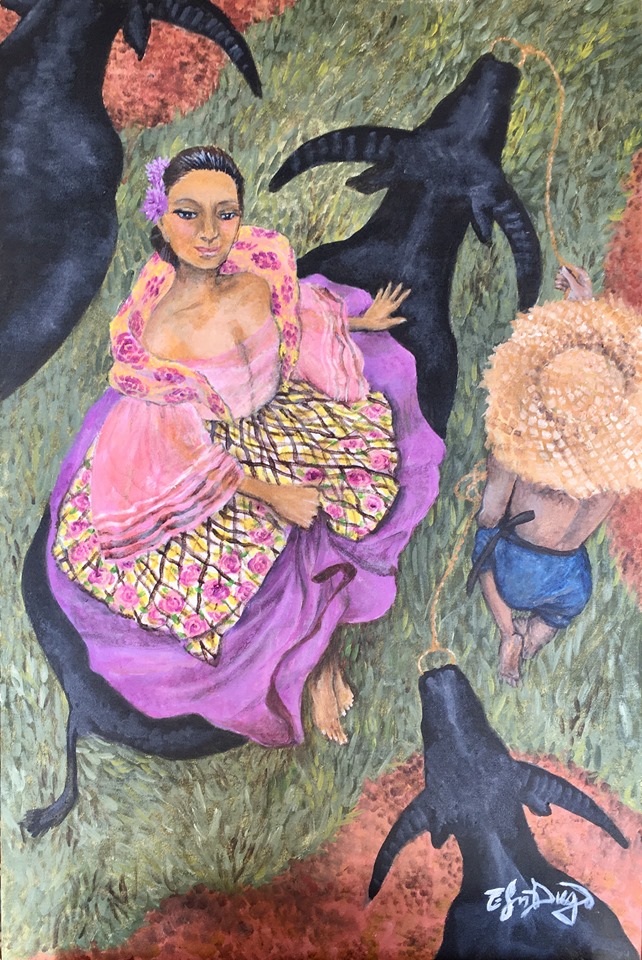
Apart from celebrating the Filipino beauty, the costume designer in Edgar is also evident in the clothes his subjects wear. In “Manliligaw,” which is set in the 1950s, for instance, the woman is wearing a Ramon Valera-type gown.
“I want my paintings to show the beauty of Filipino culture and heritage during a time gone by through the characters themselves, their clothes, furniture pieces and their oneness with nature,” he adds.
How Edgar became a designer is a story in itself. When he was about to enroll in college, his father wanted him to pursue Architecture. But since Math, one of the foundations of Architecture, has never been one of his strengths, he decided to pursue Fine Arts instead.
“Had I listened to my dad, I’m certain I would have flunked Architecture,” he says.

To gain some form of financial independence to pursue a course his father wasn’t initially too keen on, Edgar started working part time as a window display artist at Plaza Fashion, one of the anchor stores of the now defunct Harrison Plaza. He used most of the money he earned to buy school-related materials. On the side, he also hand-painted gowns for such designers as Junjun Cambe and Kiko Rodriguez. Both jobs also started Edgar’s initial exposure to clothes.
“Eventually, I made some friends and connections in the business, which helped me a lot when I started my own shop right after graduation in 1981. My parents were also very supportive of my chosen career,” he says.
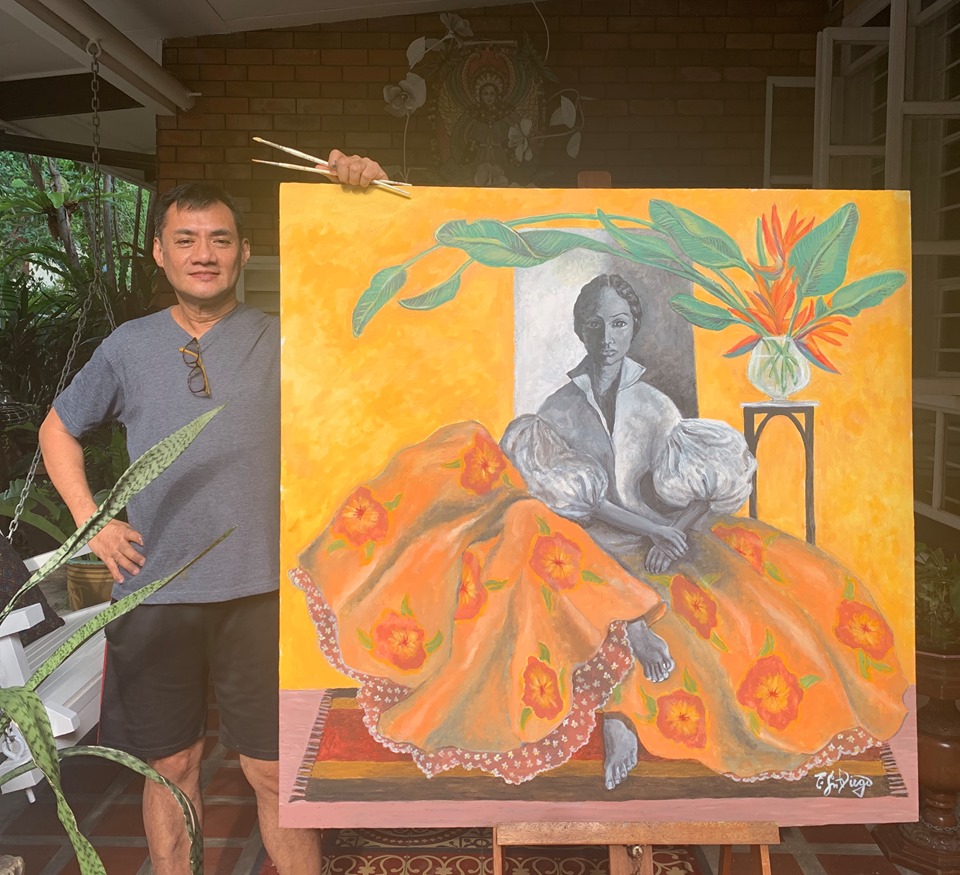
When the hand-painting trend went out of style, Edgar, curious as he is resourceful, learned other ways to embellish his clothes. It was also during this transition that he fell in love with embroidery. As a designer, everything, he says, was a “continuous learning process” that required him to put down paint and brush for a while to focus on a number of myriad tasks before him, including managing people and running a business.

But his love affair with painting has never left him. When the pandemic hit, Edgar eventually found himself taking it up again. And this time, he seems poised to never let go of paint and brush again for good.
Edgar San Diego plans to hold an exhibit of his artworks next year, or as soon as the pandemic starts to die down. For now, he says, he has already marked some of his paintings as “reserved.”

